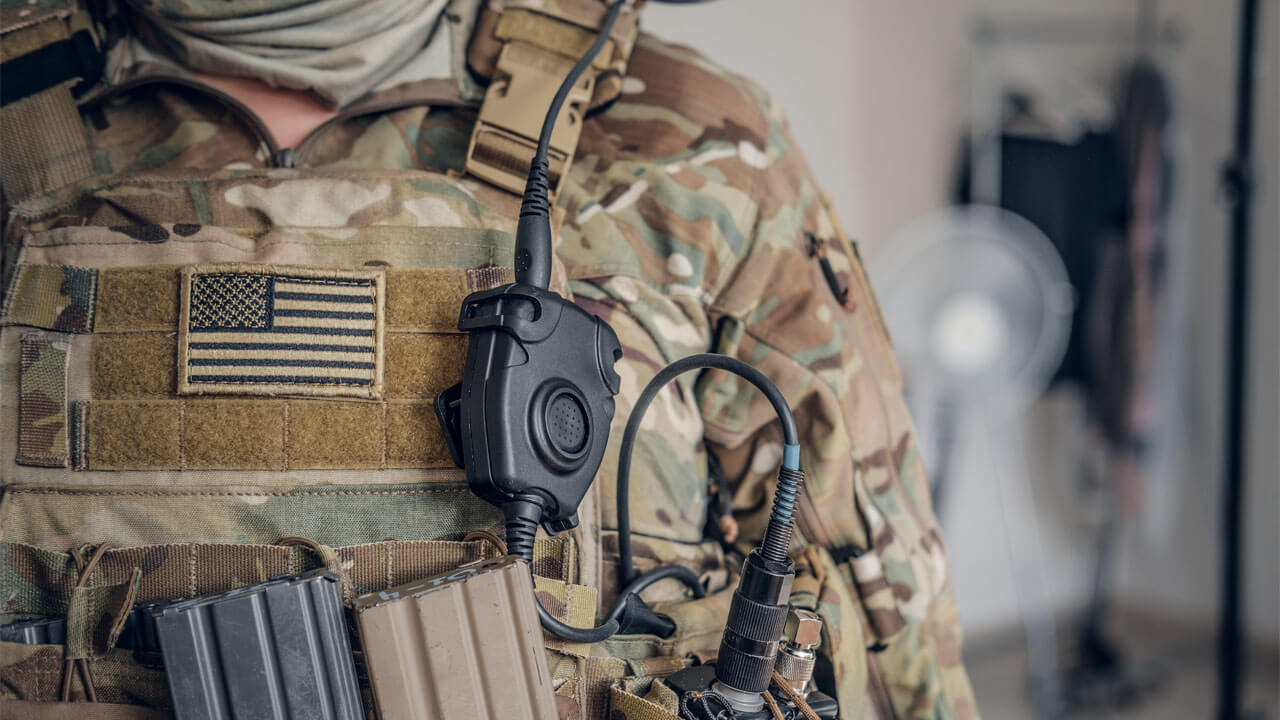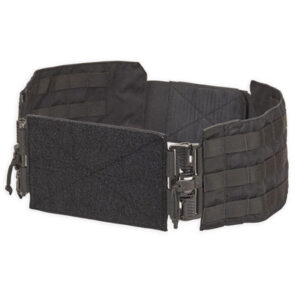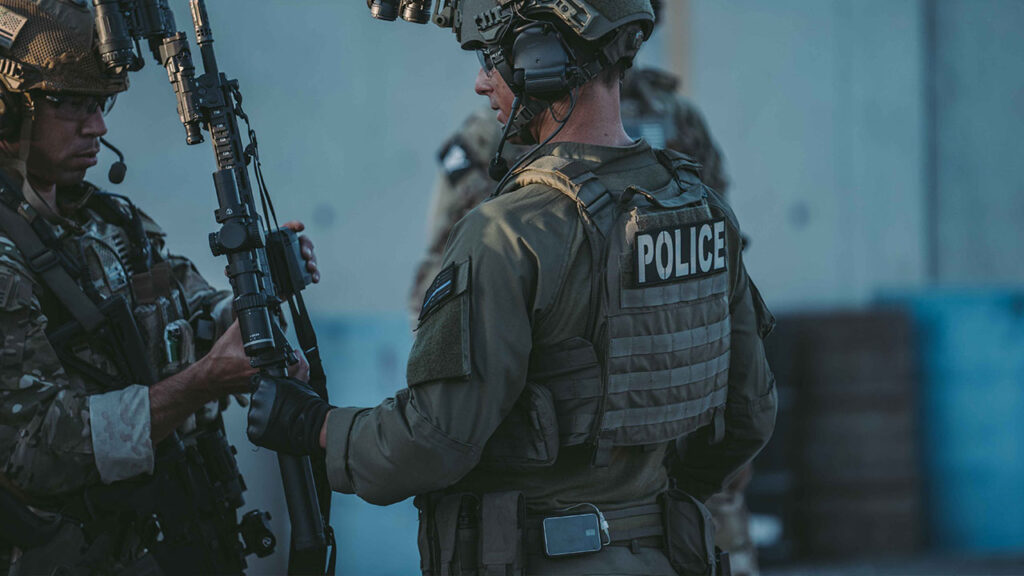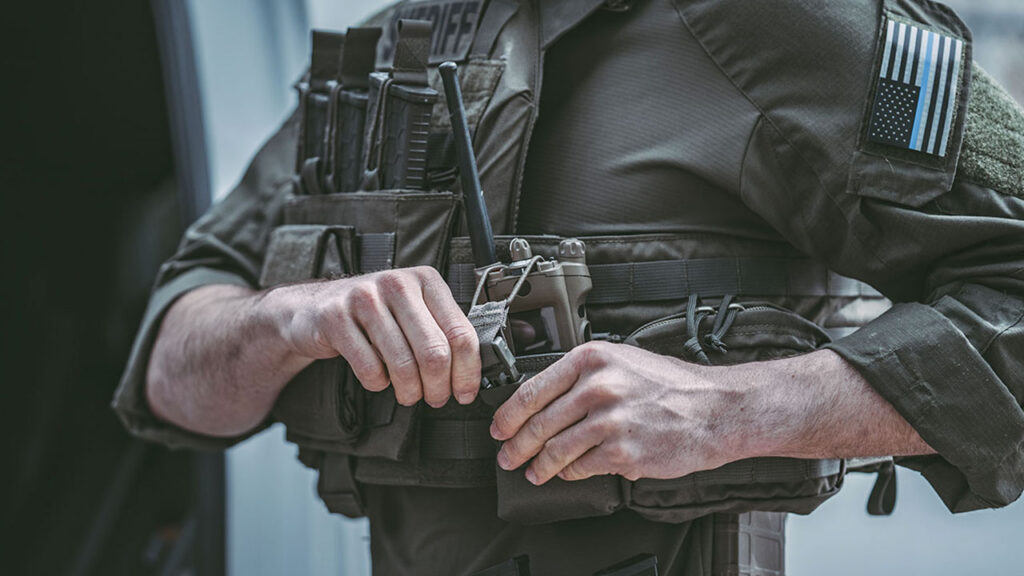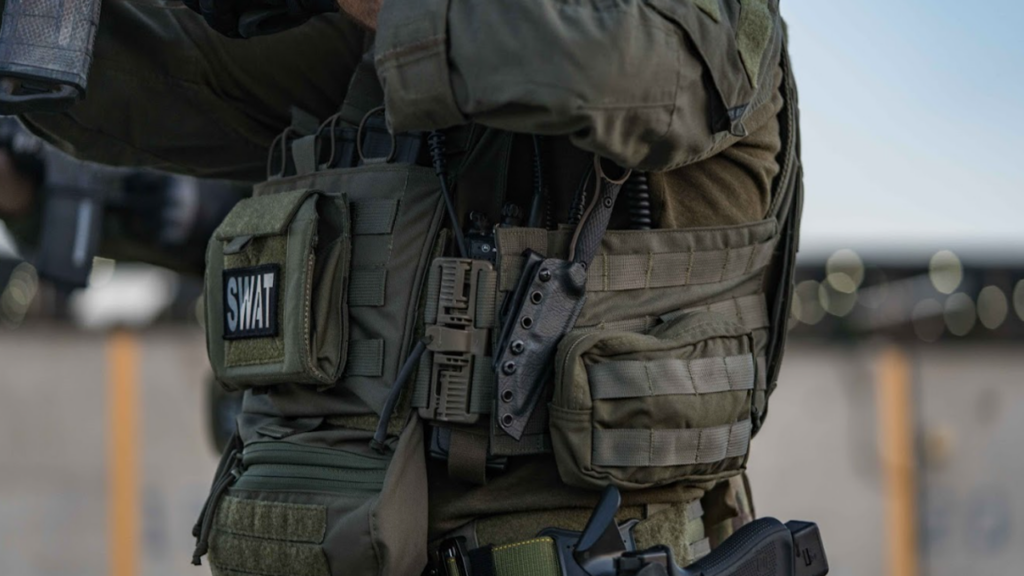Plate carriers, a pivotal element of tactical gear, have become essential for individuals seeking protection and mobility in high-risk environments. These body armor systems are indispensable in military operations, law enforcement gear, and civilian defense, providing a versatile means to carry essential protective ballistic plates while maintaining agility and comfort—the key phrase here is “agility.” Keep reading; we have included lots of facts and information that’s quite fascinating.
History of Plate Carriers
The evolution of plate carriers, a cornerstone in military plate carriers, began with the armed forces’ need for gear that balanced lightness and strength to support ballistic armor plates. These carriers have evolved into a modular design that meets mission-specific needs, reflecting their adaptability over time; however, let us travel a bit back in time to review.
The history of plate carriers can be traced back to ancient times (oh yes, we are going this far back) when warriors utilized various forms of body armor for protection in combat.
However, the modern plate carrier as we know it evolved significantly over the past few decades:
- Early body armor: Throughout history, soldiers have worn armor made of materials such as leather, metal, and even layered cloth to protect themselves in battle. These armors vary widely in design and effectiveness.
- Development of modern ballistic armor: In the 20th century, advancements in materials science led to the development of modern ballistic armor, including ceramic, steel, and composite plates capable of stopping bullets and shrapnel.
- Introduction of flak jackets: During World War II, flak jackets were introduced to protect military personnel from explosive fragments and projectiles. These early designs evolved into more sophisticated body armor systems over time.
- Introduction of plate carriers: Plate carriers, as we recognize them today, emerged in the late 20th and early 21st centuries in response to the need for lightweight, modular, and customizable body armor systems. These carriers were designed to hold ballistic plates while offering mobility and flexibility to the wearer.
- Military adoption: Plate carriers became increasingly popular among military forces worldwide due to their versatility, modularity, and ability to effectively protect against ballistic threats. The U.S. Army began testing various commercial, off-the-shelf plate carriers for issuing to troops deploying to Afghanistan in 2009. This was part of an effort to provide a lighter, more comfortable alternative to the Improved Outer Tactical Vest (IOTV). The KDH Defense Systems Magnum TAC-1 plate carrier was selected over other competitors, leading to an initial contract for 57,000 plate carriers. These plate carriers, known as the Soldier Plate Carrier System (SPCS), offer increased mobility and comfort compared to the IOTV.
- Evolution of design and materials: Over the years, plate carriers have undergone continuous refinement and improvement, with advancements in materials, design, and manufacturing techniques. This includes using lightweight yet durable materials, ergonomic designs, and integrating features such as MOLLE webbing for accessory attachment.
- Adoption by law enforcement and civilians: Plate carriers are used by military personnel law enforcement agencies, as well as civilians for personal protection, tactical operations, and recreational shooting sports.
Components of a Plate Carrier
A plate carrier is a specialized protected vest designed to hold ballistic plates, which offer protection against bullets and other ballistic threats. These plates are commonly made from ceramic, steel, or composite materials, ensuring maximum safety.
Key components of a plate carrier include:
Front Panel
The front panel of a plate carrier is the vest’s central piece, housing the primary ballistic plate. Positioned to shield vital organs like the heart and lungs, it is crucial for life-saving protection.
Back Panel
The back panel holds an additional ballistic plate, ensuring comprehensive front and back defense. This dual-panel setup is essential for complete safety during engagements.
Shoulder Straps
Shoulder straps are vital for distributing the weight of the plate carrier evenly across your shoulders. Proper adjustment of these straps enhances comfort, stability, and motion during use.
MOLLE System
The MOLLE system features webbing and loops, allowing the attachment of various pouches and accessories. This system will enable you to customize your plate carrier with items like mag pouches, radios, a multi-tool, or a flashlight.
Types of Plate Carriers
Plate carriers come in various forms and are designed to cater to multiple operational needs. Tactical plate carriers emphasize functionality and resilience, concealed plate carriers offer low-profile protection, and modular plate carriers allow extensive customization to accommodate different armor plates and mission requirements.
Concealable Plate Carriers
Concealable plate carriers are ideal for individuals requiring protection without paying attention to themselves. They are designed to be worn discreetly under clothing and offer ballistic protection without sacrificing comfort or mobility. They are popular among security professionals and undercover operatives.
Lightweight Plate Carriers
Lightweight plate carriers are preferred by individuals who prioritize agility and maneuverability. They offer reliable protection while minimizing bulk and weight, and they are constructed from advanced materials such as carbon fiber or high-density polyethylene. Special operations forces and emergency response teams favor them.
Modular Plate Carriers
Modular plate carriers combine the versatility of tactical carriers with the streamlined design of concealable models. They feature detachable components, allowing users to adjust their loadout based on the mission requirements quickly. These carriers offer a balance of adaptability and comfort, making them suitable for various applications.
Tips For Choosing The Right Plate Carrier
When choosing the appropriate plate carrier, it is vital to assess the following:
Intended Use: Assess the specific capabilities required for your missions, including carrying magazines, a flashlight, and other gear.
Proper Sizing: Ensure a precise fit for optimal protection and comfort, accounting for the placement of plates and additional pieces.
Material Durability: Select materials that guarantee longevity under harsh conditions, ensuring your plate carrier setup withstands tough environments.
Level of Comfort: Choose a carrier that remains comfortable for extended wear, with well-designed shoulder straps and weight distribution.
Customization Options: Look for a MOLLE system to attach various pouches, such as tourniquets, bandages, and radios.
Compatibility: Ensure compatibility with other gear like chest rigs, belts, and vests for a cohesive setup.
When choosing the appropriate plate carrier, it is vital to assess the intended use, proper sizing for a precise fit, material durability to ensure longevity, and the level of comfort required for extended wear.
Benefits of Using Plate Carriers
The advantages of employing plate carriers are numerous, including:
Superior Defense: Provides enhanced protection for vital organs against ballistic threats, ensuring safety in critical situations.
Enhanced Mobility: Offers greater movement capabilities than traditional armor, allowing for better motion and actions.
Customization: Allows personalized tactical gear setups, such as mag pouches, radios, gloves, a knife, and a multi-tool.
Weight Distribution: Shoulder straps help evenly distribute the weight, reducing fatigue and improving endurance.
Quick Access: Enables access to essential items like magazines, a flashlight, and medical supplies.
Versatility: Adaptable to different missions and environments, offering gear arrangement and use flexibility.
Improved Navigation: Incorporate items like a compass for better location tracking and navigation.
Increased Efficiency: Streamlines equipment organization, making locating and utilizing gear easier during high-pressure situations.
Plate Carrier Accessories
An array of plate carrier accessories can markedly elevate the gear’s functionality. These add-ons range from pouches for extra storage and hydration systems essential for long missions to additional armor plates for increased protection. Some popular accessories that can be attached to a plate carrier include:
- Magazine pouches, also known as Ammo Pouches, are perhaps the most obvious type, but they allow for convenient access to extra ammunition.
- Utility pouches carry miscellaneous items such as first aid kits, multitools, or communication devices.
- Admin pouches: Ideal for storing small tools, pens, notebooks, or other administrative items.
- Holsters: Provide a secure attachment point for sidearms.
- Hydration carriers: Enable the wearer to carry water or hydration systems for extended periods.
- Medical pouches: Designed to hold medical supplies and equipment for emergencies.
- MOLLE-compatible gear: The Modular Lightweight Load-carrying Equipment (MOLLE) system allows for various attachments, such as patches, lights, or carabiners.
- Radio pouches: Allow for secure storage and easy access to communication devices.
- Grenade pouches: Provide storage for grenades or similarly sized items.
- Armor Plates: Additional plate carrier plates can be inserted to increase protection. Remember, the carrier itself DOES NOT OFFER BALLISTIC PROTECTION. It would be best if you had Amore plates in the carrier.
These accessories enhance the functionality and versatility of a plate carrier, catering to different mission requirements and personal preferences.
Plate Carriers in Law Enforcement
Plate carriers are a vital element of law enforcement gear. Law enforcement agencies utilize them to enhance officer safety in high-risk operations. These carriers are engineered for essential protection while ensuring officers remain agile and maneuverable in urban environments.
Plate Carriers in Civilian Use
Civilian plate carriers serve as multifunctional tools for personal defense and are also adaptable for outdoor activities like hiking and hunting. They provide personal security for those committed to being proactive in diverse environments.
Maintenance and Care of Plate Carriers
Diligent plate carrier maintenance is crucial for ensuring their longevity and functionality. This includes regular cleaning, detailed inspection for wear or damage, and adhering to proper storage practices to maintain their condition during periods of inactivity.
Maintenance and care are essential to ensure the longevity and performance of a plate carrier. Here are some tips for plate carrier owners:
- Regular inspection: Inspect the plate carrier for any wear, damage, or loose stitching. Pay attention to areas of high stress, such as attachment points and seams.
- Cleaning: Follow the manufacturer’s instructions for cleaning the plate carrier. Typically, it can be wiped down with a damp cloth and mild soap to remove dirt, sweat, and other contaminants. Allow it to air dry thoroughly before storing.
- Storage: Store the plate carrier in a cool, dry place away from direct sunlight and moisture. Avoid folding or compressing the carrier for long periods, which can cause deformation or creasing.
- Avoid harsh chemicals: Do not expose the plate carrier to harsh chemicals, solvents, or abrasives, as these can damage the fabric, webbing, or coatings.
- Remove ballistic plates: If possible, remove the ballistic plates from the carrier before cleaning to prevent moisture buildup and ensure thorough cleaning of the carrier’s interior.
- Repair promptly: Address any damage or loose stitching promptly to prevent further deterioration and maintain the integrity of the plate carrier.
- Adjust straps and buckles: Periodically check and adjust straps, buckles, and fasteners to ensure a secure and comfortable fit. Replace any worn or damaged components as needed.
- Follow manufacturer guidelines: For specific maintenance and care instructions tailored to your plate carrier model, refer to the manufacturer’s guidelines and recommendations.
Bottom Line
Plate carriers, pivotal for protection and mobility, are indispensable for individuals operating in high-risk environments. Owing to the latest design and cutting-edge technology, these plate carrier systems are evolving, ensuring users can face potential threats with increased agility and comfort.
The advancements in plate carrier technology instill confidence, allowing for seamless movement and reliable protection in demanding situations. If you need one of the best plate carriers today, shop Chaste Tactical’s nylon products or call us for a 1:1 shopping experience.

